- Home
- Julian Barnes
Flaubert's Parrot
Flaubert's Parrot Read online
JULIAN BARNES’S
Flaubert’s
Parrot
“Witty and dazzling!”
—Christopher Lehmann-Haupt, The New York Times
“Flaubert’s Parrot is a book that by turns engages, impresses and finally bowls you over with its sharpness, wit and dazzling originality.”
—Los Angeles Herald Examiner
“A gem: an unashamed literary novel that is also unashamed to be readable, and broadly entertaining. Bravo!”
—John Irving
“Brilliant and witty.”
—Cleveland Plain Dealer
“[Flaubert’s Parrot] tackles serious concepts with verve. Like the eponymous bird it’s funny but has much to say … witty and playful.”
—Los Angeles Times
“Delightful and enriching … a book to revel in!”
—Joseph Heller
“A small miracle of a novel that tantalizes and charms.”
—Atlanta Journal-Constitution
“The pleasure in this book lies in the way Barnes circulates among his historical and imaginary characters and in his agile writing strategies.”
—Time
“What a good book Julian Barnes has written!… So clever and so sensitive at once.”
—Richard Ellmann
“A wonderful reading experience.”
—Chicago Tribune
“Barnes speak to anyone who loves the possibilities of literature.”
—Richmond Times Dispatch
“In this free-form examination of the great French novelist’s life and artistic practice, amateur scholarship, cranky partisanship, and a passionate effort at self-understanding are amusingly assembled into a resonant literary comedy.”
—Christian Science Monitor
“It is a cranky, brilliant book.”
—Wall Street Journal
JULIAN BARNES
Flaubert’s Parrot
Born in Leicester, England, in 1946, Julian Barnes is the author of nine novels, a book of stories, and collections of essays. His work has been translated into more than thirty languages. In France he is the only writer to have won both the Prix Médicis and the Prix Fémina, and in 1988 he was made a Chevalier de l’Ordre des Arts et des Lettres. He lives in London.
Also by Julian Barnes
ARTHUR & GEORGE
THE LEMON TABLE
SOMETHING TO DECLARE
LOVE, ETC.
ENGLAND, ENGLAND
CROSS CHANNEL
LETTERS FROM LONDON
THE PORCUPINE
TALKING IT OVER
A HISTORY OF THE WORLD IN 10½ CHAPTERS
STARING AT THE SUN
BEFORE SHE MET ME
METROLAND
FIRST VINTAGE INTERNATIONAL EDITION, DECEMBER 1990
Copyright © 1984 by Julian Barnes
All rights reserved under International and Pan-American Copyright Conventions.
Published in the United States by Vintage Books, a division of Random House, Inc., New York. Originally published in hardcover in Great Britain by Jonathan Cape, Ltd., London, in 1984 and in the United States by Alfred A. Knopf, Inc., New York, in 1985.
“Flaubert’s Parrot” was first published in the London Review of Books, and “Emma Bovary’s Eyes” first appeared in an edited form in Granta.
Library of Congress Cataloging-in-Publication Data
Barnes, Julian.
Flaubert’s parrot/Julian Barnes—1st Vintage international ed.
p. cm.—(Vintage international)
eISBN: 978-0-307-79785-8
1. Flaubert, Gustave, 1821–1880, in fiction, drama, poetry, etc. I. Title.
PR6052.A6657F56 1990
823’.914—dc20 90-50162
CIP
Author photo copyright © Miriam Berkley
v3.1
To Pat
When you write the biography of a friend,
you must do it as if you were taking revenge for him.
Flaubert, letter to Ernest Feydeau, 1872
Contents
Cover
About the Author
Other Book by This Author
Title Page
Copyright
Dedication
1 Flaubert’s Parrot
2 Chronology
3 Finders Keepers
4 The Flaubert Bestiary
5 Snap!
6 Emma Bovary’s Eyes
7 Cross Channel
8 The Train-spotter’s Guide to Flaubert
9 The Flaubert Apocrypha
10 The Case Against
11 Louise Colet’s Version
12 Braithwaite’s Dictionary of Accepted Ideas
13 Pure Story
14 Examination Paper
15 And the Parrot …
Note
I am grateful to James Fenton and the Salamander Press for permission to reprint the lines from ‘A German Requiem’ on this page. The translations in this book are by Geoffrey Braithwaite; though he would have been lost without the impeccable example of Francis Steegmuller.
J.B.
1
Flaubert’s Parrot
Six North Africans were playing boules beneath Flaubert’s statue. Clean cracks sounded over the grumble of jammed traffic. With a final, ironic caress from the fingertips, a brown hand dispatched a silver globe. It landed, hopped heavily, and curved in a slow scatter of hard dust. The thrower remained a stylish, temporary statue: knees not quite unbent, and the right hand ecstatically spread. I noticed a furled white shirt, a bare forearm and a blob on the back of the wrist. Not a watch, as I first thought, or a tattoo, but a coloured transfer: the face of a political sage much admired in the desert.
Let me start with the statue: the one above, the permanent, unstylish one, the one crying cupreous tears, the floppy-tied, square-waistcoated, baggy-trousered, straggle-moustached, wary, aloof bequeathed image of the man. Flaubert doesn’t return the gaze. He stares south from the place des Carmes towards the Cathedral, out over the city he despised, and which in turn has largely ignored him. The head is defensively high: only the pigeons can see the full extent of the writer’s baldness.
This statue isn’t the original one. The Germans took the first Flaubert away in 1941, along with the railings and door-knockers. Perhaps he was processed into cap-badges. For a decade or so, the pedestal was empty. Then a Mayor of Rouen who was keen on statues rediscovered the original plaster cast – made by a Russian called Leopold Bernstamm – and the city council approved the making of a new image. Rouen bought itself a proper metal statue in 93 per cent copper and 7 per cent tin: the founders, Rudier of Châtillon-sous-Bagneux, assert that such an alloy is guarantee against corrosion. Two other towns, Trouville and Barentin, contributed to the project and received stone statues. These have worn less well. At Trouville Flaubert’s upper thigh has had to be patched, and bits of his moustache have fallen off: structural wires poke out like twigs from a concrete stub on his upper lip.
Perhaps the foundry’s assurances can be believed; perhaps this second-impression statue will last. But I see no particular grounds for confidence. Nothing much else to do with Flaubert has ever lasted. He died little more than a hundred years ago, and all that remains of him is paper. Paper, ideas, phrases, metaphors, structured prose which turns into sound. This, as it happens, is precisely what he would have wanted; it’s only his admirers who sentimentally complain. The writer’s house at Croisset was knocked down shortly after his death and replaced by a factory for extracting alcohol from damaged wheat. It wouldn’t take much to get rid of his effigy either: if one statue-loving Mayor can put it up, another – perhaps a bookish party-liner who has half-read Sartre on Flaubert – might zealously take it down.
/> I begin with the statue, because that’s where I began the whole project. Why does the writing make us chase the writer? Why can’t we leave well alone? Why aren’t the books enough? Flaubert wanted them to be: few writers believed more in the objectivity of the written text and the insignificance of the writer’s personality; yet still we disobediently pursue. The image, the face, the signature; the 93 per cent copper statue and the Nadar photograph; the scrap of clothing and the lock of hair. What makes us randy for relics? Don’t we believe the words enough? Do we think the leavings of a life contain some ancillary truth? When Robert Louis Stevenson died, his business-minded Scottish nanny quietly began selling hair which she claimed to have cut from the writer’s head forty years earlier. The believers, the seekers, the pursuers bought enough of it to stuff a sofa.
I decided to save Croisset until later. I had five days in Rouen, and childhood instinct still makes me keep the best until last. Does the same impulse sometimes operate with writers? Hold off, hold off, the best is yet to come? If so, then how tantalising are the unfinished books. A pair of them come at once to mind: Bouvard et Pécuchet, where Flaubert sought to enclose and subdue the whole world, the whole of human striving and human failing; and L’Idiot de la famille, where Sartre sought to enclose the whole of Flaubert: enclose and subdue the master writer, the master bourgeois, the terror, the enemy, the sage. A stroke terminated the first project; blindness abbreviated the second.
I thought of writing books myself once. I had the ideas; I even made notes. But I was a doctor, married with children. You can only do one thing well: Flaubert knew that. Being a doctor was what I did well. My wife … died. My children are scattered now; they write whenever guilt impels. They have their own lives, naturally. ‘Life! Life! To have erections!’ I was reading that Flaubertian exclamation the other day. It made me feel like a stone statue with a patched upper thigh.
The unwritten books? They aren’t a cause for resentment. There are too many books already. Besides, I remember the end of L’Education sentimentale. Frédéric and his companion Deslauriers are looking back over their lives. Their final, favourite memory is of a visit to a brothel years before, when they were still schoolboys. They had planned the trip in detail, had their hair specially curled for the occasion, and had even stolen flowers for the girls. But when they got to the brothel, Frédéric lost his nerve, and they both ran away. Such was the best day of their lives. Isn’t the most reliable form of pleasure, Flaubert implies, the pleasure of anticipation? Who needs to burst into fulfilment’s desolate attic?
I spent my first day wandering about Rouen, trying to recognise parts of it from when I’d come through in 1944. Large areas were bombed and shelled, of course; after forty years they’re still patching up the Cathedral. I didn’t find much to colour in the monochrome memories. Next day I drove west to Caen and then north to the beaches. You follow a series of weathered tin signs, erected by the Ministère des Travaux Publics et des Transports. This way for the Circuit des Plages de Débarquement: a tourist route of the landings. East of Arromanches lie the British and Canadian beaches – Gold, Juno, Sword. Not an imaginative choice of words; so much less memorable than Omaha and Utah. Unless, of course, it’s the actions that make the words memorable, and not the other way round.
Graye-sur-Mer, Courseulles-sur-Mer, Ver-sur-Mer, Asnelles, Arromanches. Down tiny sidestreets you suddenly come across a place des Royal Engineers or a place W. Churchill. Rusting tanks stand guard over beach huts; slab monuments like ships’ funnels announce in English and French: ‘Here on the 6th June 1944 Europe was liberated by the heroism of the Allied Forces.’ It is very quiet, and not at all sinister. At Arromanches I put two one-franc pieces into the Télescope Panoramique (Très Puissant 15/60 Longue Durée) and traced the curving morse of the Mulberry Harbour far out to sea. Dot, dash, dash, dash went the concrete caissons, with the unhurried water between them. Shags had colonised these square boulders of wartime junk.
I lunched at the Hôtel de la Marine overlooking the bay. I was close to where friends had died – the sudden friends those years produced – and yet I felt unmoved. 50th Armoured Division, Second British Army. Memories came out of hiding, but not emotions; not even the memories of emotions. After lunch I went to the museum and watched a film about the landings, then drove ten kilometres to Bayeux to examine that other cross-Channel invasion of nine centuries earlier. Queen Matilda’s tapestry is like horizontal cinema, the frames joined edge to edge. Both events seemed equally strange: one too distant to be true, the other too familiar to be true. How do we seize the past? Can we ever do so? When I was a medical student some pranksters at an end-of-term dance released into the hall a piglet which had been smeared with grease. It squirmed between legs, evaded capture, squealed a lot. People fell over trying to grasp it, and were made to look ridiculous in the process. The past often seems to behave like that piglet.
On my third day in Rouen I walked to the Hôtel-Dieu, the hospital where Gustave’s father had been head surgeon, and where the writer spent his childhood. Along the avenue Gustave Flaubert, past the Imprimerie Flaubert and a snack-bar called Le Flaubert: you certainly feel you’re going in the right direction. Parked near the hospital was a large white Peugeot hatchback: it was painted with blue stars, a telephone number and the words AMBULANCE FLAUBERT. The writer as healer? Unlikely. I remembered George Sand’s matronly rebuke to her younger colleague. ‘You produce desolation,’ she wrote, ‘and I produce consolation.’ The Peugeot should have read AMBULANCE GEORGE SAND.
At the Hôtel-Dieu I was admitted by a gaunt, fidgety gardien whose white coat puzzled me. He wasn’t a doctor, a pharmacien or a cricket umpire. White coats imply antisepsis and clean judgment. Why should a museum caretaker wear one – to protect Gustave’s childhood from germs? He explained that the museum was devoted partly to Flaubert and partly to medical history, then hurried me round, locking the doors behind us with noisy efficiency. I was shown the room where Gustave was born, his eau-de-Cologne pot, tobacco jar and first magazine article. Various images of the writer confirmed the dire early shift he underwent from handsome youth to paunchy, balding burgher. Syphilis, some conclude. Normal nineteenth-century ageing, others reply. Perhaps it was merely that his body had a sense of decorum: when the mind inside declared itself prematurely old, the flesh did its best to conform. I kept reminding myself that he had fair hair. It’s hard to remember: photographs make everyone seem dark.
The other rooms contained medical instruments of the eighteenth and nineteenth centuries: heavy metal relics coming to sharp points, and enema pumps of a calibre which surprised even me. Medicine then must have been such an exciting, desperate, violent business; nowadays it is all pills and bureaucracy. Or is it just that the past seems to contain more local colour than the present? I studied the doctoral thesis of Gustave’s brother Achille: it was called ‘Some Considerations on the Moment of Operation on the Strangulated Hernia’. A fraternal parallel: Achille’s thesis later became Gustave’s metaphor. ‘I feel, against the stupidity of my time, floods of hatred which choke me. Shit rises to my mouth as in the case of a strangulated hernia. But I want to keep it, fix it, harden it; I want to concoct a paste with which I shall cover the nineteenth century, in the same way as they paint Indian pagodas with cow dung.’
The conjunction of these two museums seemed odd at first. It made sense when I remembered Lemot’s famous cartoon of Flaubert dissecting Emma Bovary. It shows the novelist flourishing on the end of a large fork the dripping heart he has triumphantly torn from his heroine’s body. He brandishes the organ aloft like a prize surgical exhibit, while on the left of the drawing the feet of the recumbent, violated Emma are just visible. The writer as butcher, the writer as sensitive brute.
Then I saw the parrot. It sat in a small alcove, bright green and perky-eyed, with its head at an inquiring angle. ‘Psittacus,’ ran the inscription on the end of its perch: ‘Parrot borrowed by G. Flaubert from the Museum of Rouen and placed on his work-table
during the writing of Un cœur simple, where it is called Loulou, the parrot of Félicité, the principal character in the tale.’ A Xeroxed letter from Flaubert confirmed the fact: the parrot, he wrote, had been on his desk for three weeks, and the sight of it was beginning to irritate him.
Loulou was in fine condition, the feathers as crisp and the eye as irritating as they must have been a hundred years earlier. I gazed at the bird, and to my surprise felt ardently in touch with this writer who disdainfully forbade posterity to take any personal interest in him. His statue was a retread; his house had been knocked down; his books naturally had their own life – responses to them weren’t responses to him. But here, in this unexceptional green parrot, preserved in a routine yet mysterious fashion, was something which made me feel I had almost known the writer. I was both moved and cheered.
On the way back to my hotel I bought a student text of Un cœur simple. Perhaps you know the story. It’s about a poor, uneducated servant-woman called Félicité, who serves the same mistress for half a century, unresentfully sacrificing her own life to those of others. She becomes attached, in turn, to a rough fiancé, to her mistress’s children, to her nephew, and to an old man with a cancerous arm. All of them are casually taken from her: they die, or depart, or simply forget her. It is an existence in which, not surprisingly, the consolations of religion come to make up for the desolations of life.
The final object in Félicité’s ever-diminishing chain of attachments is Loulou, the parrot. When, in due course, he too dies, Félicité has him stuffed. She keeps the adored relic beside her, and even takes to saying her prayers while kneeling before him. A doctrinal confusion develops in her simple mind: she wonders whether the Holy Ghost, conventionally represented as a dove, would not be better portrayed as a parrot. Logic is certainly on her side: parrots and Holy Ghosts can speak, whereas doves cannot. At the end of the story, Félicité herself dies. ‘There was a smile on her lips. The movements of her heart slowed down beat by beat, each time more distant, like a fountain running dry or an echo disappearing; and as she breathed her final breath she thought she saw, as the heavens opened for her, a gigantic parrot hovering above her head.’

 The Sense of an Ending
The Sense of an Ending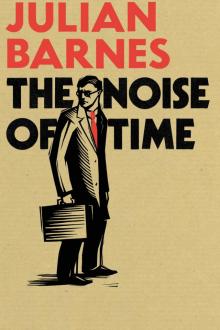 The Noise of Time
The Noise of Time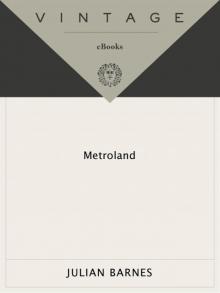 Metroland
Metroland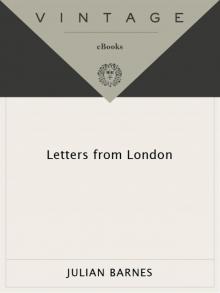 Letters From London
Letters From London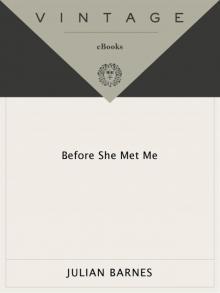 Before She Met Me
Before She Met Me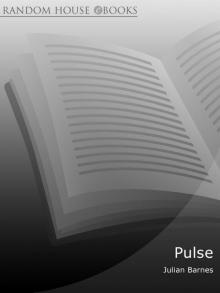 Pulse
Pulse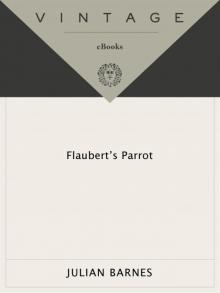 Flaubert's Parrot
Flaubert's Parrot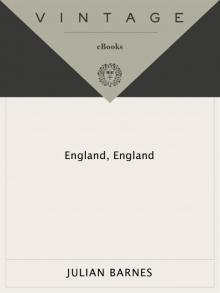 England, England
England, England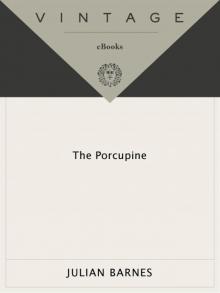 The Porcupine
The Porcupine The Only Story
The Only Story Love, Etc
Love, Etc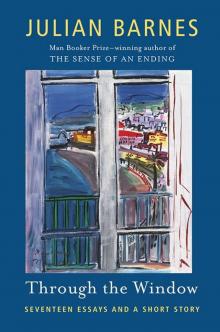 Through the Window: Seventeen Essays and a Short Story
Through the Window: Seventeen Essays and a Short Story Staring at the Sun
Staring at the Sun Cross Channel
Cross Channel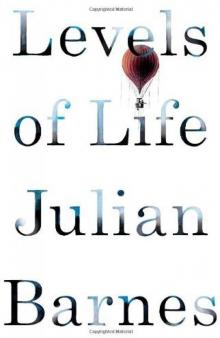 Levels of Life
Levels of Life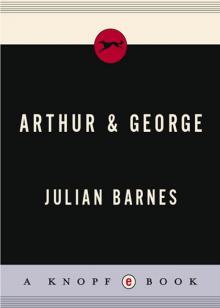 Arthur & George
Arthur & George Love, Etc.
Love, Etc.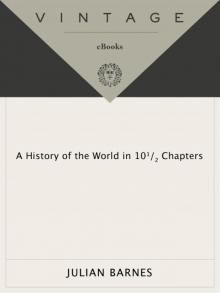 A History of the World in 10 1/2 Chapters
A History of the World in 10 1/2 Chapters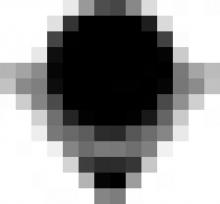 Something to Declare
Something to Declare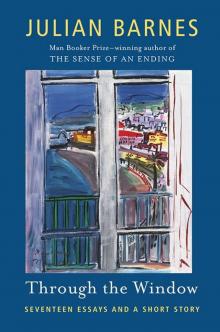 Through the Window: Seventeen Essays and a Short Story (Vintage International)
Through the Window: Seventeen Essays and a Short Story (Vintage International)